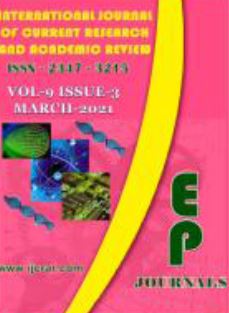Abstract Volume:9 Issue-3 Year-2021 Original Research Articles
 |
Online ISSN : 2347 - 3215 Issues : 12 per year Publisher : Excellent Publishers Email : editorijcret@gmail.com |
Tree growth is a function of the genetic potential of the species and environmental conditions. Hence, before introducing any species to a given agro ecology there is always a need for a well conducted field trial for matching species to a particular site. A study was conducted to evaluate adaptation and growth performance of five agro forestry tree species at Dire Dawa Administration; Adada2 and Harari Region; Erer dodota for three years (June 2016 - June 2019). Five agroforestry tree species (Sesbania sesban, Moringa oliefera, Gravilea robusta, Azadarichta indica and Leuceana leucocephala) were compared in randomized complete block design with three replications. Data on growth parameters, diameter, plant height and survival rate were measured and recorded at interval of three months. Results revealed that there were highly significant (p<0.05) variations among tree species in height growth, root collar diameter development, diameter at breast height and survival rate at both study areas. This could be due to environmental factor and/or genetic potential of the species, which generally govern the growth of a given species. Among the species tasted, Moringa oliefera showed the highest performance followed by Azadarichta indica, Sesbania sesban and Leuceana leucocephala in terms of height growth, root collar diameter and diameter at breast height at both Dire Dawa Administration ad Harari Region. After three years of establishment, Moringa oliefera, Azadarichta indica, Sesbania sesban and Leuceana leucocephala showed the highest mean survival rate at both study areas. Hence it can be inferred that the conditions of Dire Dawa Administration and Harari Region matched with the environmental requirement of those tree species. On the other hand, species of Gravilea robusta showed lowest performance at both study areas. Thus, the long dry season, which extended from eight to ten months in the study area, clearly explains the poor survival and growth response in some of the species. Generally, these findings may help forest and agroforestry managers to properly allocate species into the site that grow and adapt well. Further testing of provenances of the best performing species is recommended to select the most adaptable ones for such areas for future agroforestry practices at wider scale; on which success of agroforestry practices and forest plantations depend.
How to cite this article:
Bira Cheneke and Musa Abdella. 2021. Growth Performance Evaluation of Multipurpose Tree Species under Dire Dawa Administration and Harari People Regional State Condition, Eastern Ethiopia.Int.J.Curr.Res.Aca.Rev. 9(3): 89-96doi: https://doi.org/10.20546/ijcrar.2021.903.009



Quick Navigation
- Print Article
- Full Text PDF
- How to Cite this Article
- on Google
- on Google Scholor
- Citation Alert By Google Scholar
